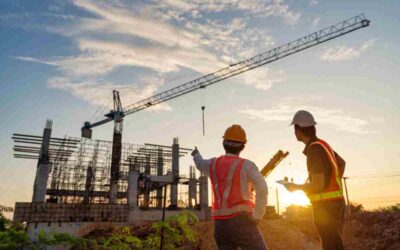
As the construction industry marches into 2024, it faces a myriad of trends and challenges that are reshaping its landscape. Understanding these factors is crucial for businesses aiming to stay competitive and thrive in a dynamic environment. This blog delves into the latest trends and challenges in the construction industry, highlighting economic factors, labor market dynamics, and technological advancements.
Economic Factors: A Mixed Outlook
The construction industry is significantly influenced by broader economic conditions. In 2024, economic factors present a mixed bag of opportunities and challenges. According to industry analyses, government funding from key legislation like the Infrastructure Investment and Jobs Act (IIJA), the Inflation Reduction Act (IRA), and the CHIPS Act is expected to boost infrastructure projects, providing a positive outlook for sectors such as transportation, energy, and logistics.
However, the commercial construction sector faces uncertainty. While warehouse and logistics spending is predicted to grow, office construction is expected to continue its decline due to ongoing shifts in work-from-home trends and the repurposing of existing spaces. Additionally, fluctuating interest rates and persistent inflation create a challenging financial environment, affecting project financing and overall profitability.
Labor Market Dynamics: Shortages and Rising Costs
One of the most pressing challenges in the construction industry is the labor market dynamics. The industry continues to grapple with a severe shortage of skilled workers. Reports indicate that the demand for construction workers is at an all-time high, yet the supply of skilled labor is insufficient, leading to project delays and increased costs.
This labor shortage is exacerbated by the aging workforce, with a significant portion of the current workforce nearing retirement. To meet production demands, the industry will need to hire hundreds of thousands of additional workers, a task complicated by the high cost of labor and competition from other sectors. This situation necessitates innovative recruitment strategies and investment in training and development programs to build a skilled workforce.
Technological Advancements: Driving Efficiency and Innovation
Technological advancements continue to be a game-changer for the construction industry. Digital tools and innovations are enhancing efficiency, safety, and project management. Building Information Modeling (BIM) remains at the forefront, enabling detailed project visualization, improved collaboration, and error reduction.
The use of drones for site surveys and inspections is becoming more prevalent, providing accurate data quickly and safely. Additionally, the integration of artificial intelligence (AI) and machine learning in construction management systems helps optimize schedules, predict project risks, and improve decision-making processes.
Automation and robotics are also making significant inroads. Automated machinery can handle repetitive and labor-intensive tasks, reducing the dependency on manual labor and enhancing productivity. These technologies not only speed up construction processes but also improve safety by minimizing human involvement in hazardous tasks.
Sustainability: Building for a Greener Future
Sustainability is a critical focus in modern construction. The push for green building practices is driven by both regulatory requirements and market demand for environmentally friendly projects. This includes the use of sustainable materials, energy-efficient designs, and renewable energy sources.
Technological solutions like energy management systems and smart building technologies help optimize resource use and reduce the environmental footprint of construction projects. By embracing sustainability, construction companies can not only comply with regulations but also attract environmentally conscious clients and investors.
Conclusion
The construction industry in 2024 is navigating through a landscape shaped by economic uncertainties, labor challenges, and rapid technological advancements. By staying informed about these trends and adapting to the evolving environment, construction businesses can position themselves for success. Embracing innovation, investing in workforce development, and committing to sustainable practices will be key to thriving in the dynamic construction industry of the future.

